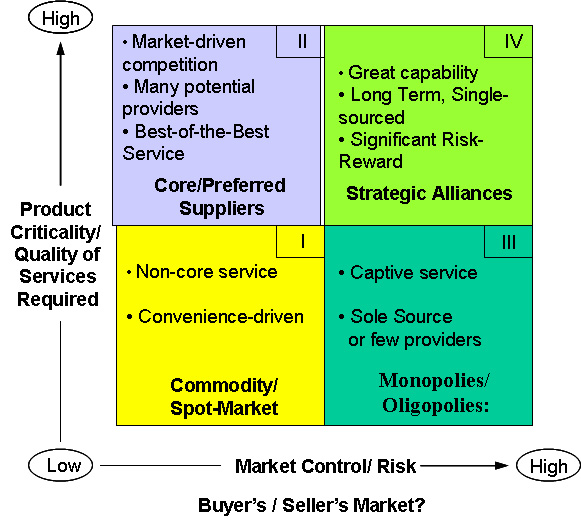SCDigest
Editorial Staff
| SCDigest Says: |
 By categorizing products along this or a similar framework, companies can craft procurement strategies appropriate to their market and usage characteristics, make decisions about the types of relationships to pursue with suppliers, and assign the right levels of skills within the organization to each purchased good. By categorizing products along this or a similar framework, companies can craft procurement strategies appropriate to their market and usage characteristics, make decisions about the types of relationships to pursue with suppliers, and assign the right levels of skills within the organization to each purchased good. 
What do you say? Send
us your comments here |
The simplest tools and frameworks are often the best, and for procurement professionals, the “Sourcing Grid” offered by Dr. Ed Marien, professor emeritus at the University of Wisconsin, offers an excellent model for thinking about the right approach to procuring specific goods and services (See also Understanding Supplier Price-Cost Management in Sourcing, and Understanding Supplier Price-Cost Management in Sourcing, Part 2.)
As shown in the figure below, Marien’s Sourcing Grid (variations of which haven been around for awhile), suggests a given good or service to be procured should be evaluated along two dimensions:
- The level of market control maintained by sellers. In other words, is the product in question more characterized as being a part of a “buyer’s market” (lots of sellers, non-differentiated products), or a “seller’s market” (few/single suppliers, very differentiated products)?
- The importance of the product or service to the buying organization (e.g., highly important/quality is critical; not that important/quality is less of a concern).
The Sourcing Grid

Source: Dr. Ed Marien
Products and services can then be placed in one of the four resulting quadrants (the X-Axis is referenced first):
I. Low-Low: Commodity goods that can often be purchased via the spot market buys.
II. Low-High: Goods/services that are important to the company but exist in a buyer’s market; use of core supplier programs often makes sense here.
III. High/Low: Monopolistic type situations (just one or a few available qualified suppliers) that present obvious procurement challenges.
IV. High/High: Use of strategic partnerships/long-term relationships often makes sense. |